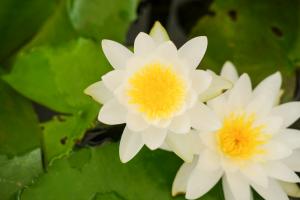When to Plant Tulip Tree Seeds
Tulip trees, also known as Liriodendron tulipifera, are beautiful, fast-growing trees that can reach up to 90 feet in height. One of the best ways to start a tulip tree is by planting the seeds. However, the success of growing tulip trees from seeds depends on when the seeds are planted. In this article, we will discuss the optimal time for planting tulip tree seeds.
Understanding Tulip Tree Seeds
Tulip tree seeds are contained in woody cones that can be found on the tree in the fall. The cones are approximately two inches long and contain up to four seeds each. Once the cones dry and open, the seeds can be collected for planting.
The seeds are short-lived, meaning they lose their viability over time. As a result, it's important to plant them as soon as possible for the highest chance of success. Fresh tulip tree seeds have a higher germination rate than older seeds, so look for seeds that are less than a year old. If the seeds are older, they may still germinate, but the success rate may be lower.
When to Plant Tulip Tree Seeds
The best time to plant tulip tree seeds is in the fall, after the cones have opened and the seeds have been collected. Planting in the fall allows the seeds to undergo a natural stratification process over the winter. The stratification process is necessary for tulip tree seeds to germinate, as it triggers the seed's natural dormancy cycle to break and begin growing. By planting in the fall, the seeds will be ready to germinate the following spring.
If you miss the fall window, you can still try to plant the seeds in the spring. Before planting, you'll need to stratify your seeds artificially. To stratify your seeds, place them in a damp paper towel and put them in a plastic bag. Seal the bag and refrigerate for 60 to 90 days. After stratification, plant the seeds in the spring once the soil is workable.
Planting Tulip Tree Seeds
Tulip tree seeds should be planted one inch deep in a location that receives full sun or partial shade. The soil should be well-draining and moist, but not waterlogged. It's also a good idea to add compost or other organic matter to the soil to improve drainage and provide nutrients.
Keep the soil consistently moist throughout the germination period, which can take up to four weeks. Once the seedlings emerge, continue to water as needed, but be careful not to overwater as this can cause root rot.
In Conclusion
Tulip trees are a beautiful addition to any landscape, and planting them from seeds can be a rewarding experience. For the best chance of success, plant tulip tree seeds in the fall or stratify them in the spring before planting. With proper care and attention, you can have a healthy tulip tree that will provide beauty and shade for generations to come.

 how many times do yo...
how many times do yo... how many planted tre...
how many planted tre... how many pine trees ...
how many pine trees ... how many pecan trees...
how many pecan trees... how many plants comp...
how many plants comp... how many plants can ...
how many plants can ... how many plants and ...
how many plants and ... how many pepper plan...
how many pepper plan...































